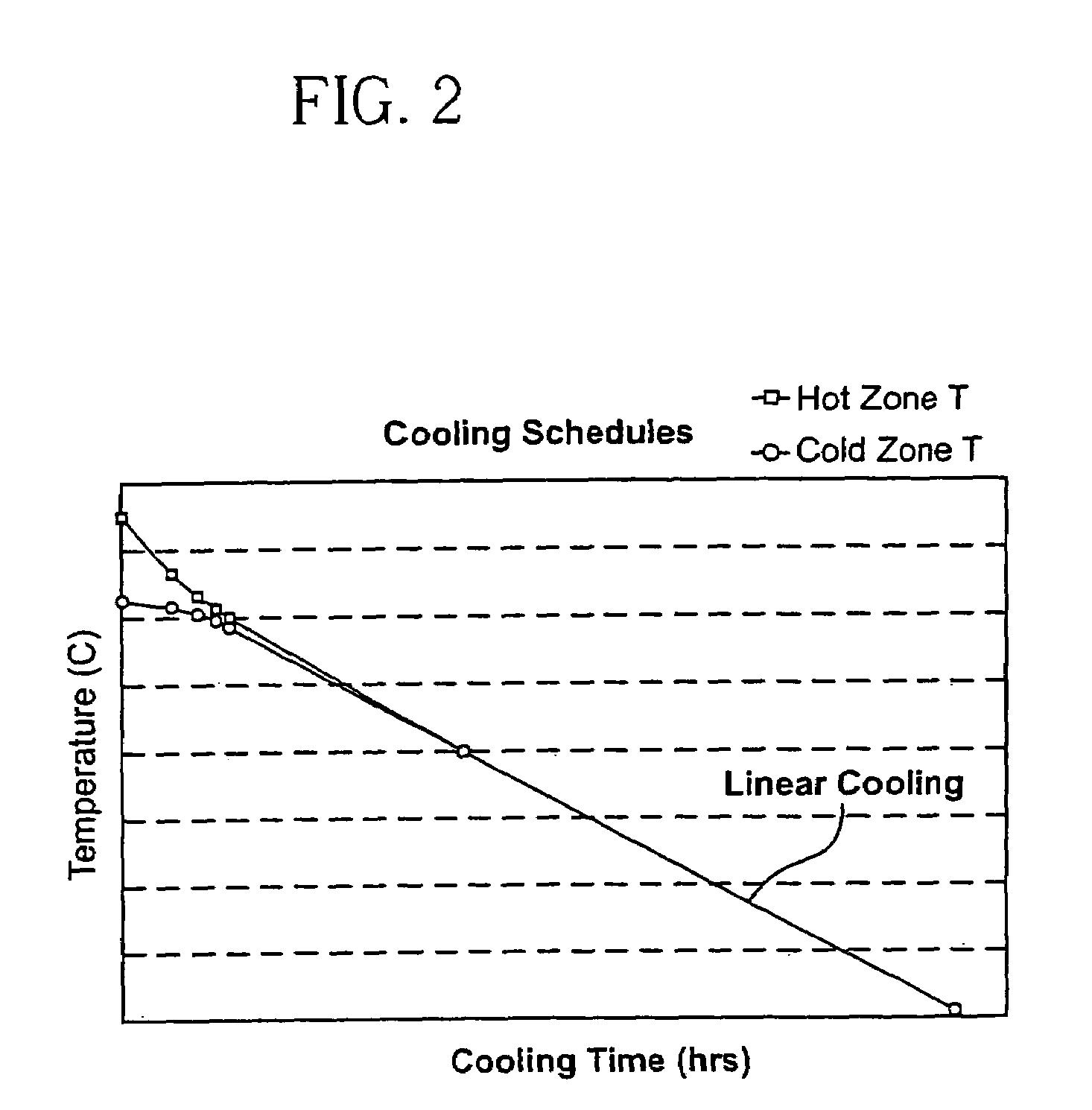Crystal growth methods
a technology of crystal growth and crystal growth, applied in the direction of crystal growth process, polycrystalline material growth, instruments, etc., can solve the problems of limiting the ability to produce calcium fluoride crystals suitable for optical lithography, high fluence damage, and fused silica, so as to reduce the value of symmetric and non-symmetric aberrations and constant rate
- Summary
- Abstract
- Description
- Claims
- Application Information
AI Technical Summary
Benefits of technology
Problems solved by technology
Method used
Image
Examples
example
[0024]Experiments were carried out in a Bridgman-Stockbarger furnace for growing crystals having a or a orientation using two different annealing approaches. One annealing approach was the conventional multiple cooling rate method and the other was the substantially constant cooling rate approach according to the present invention. The experiments used equivalent heating-up profile and the growth conditions. The only difference between the two experiments was in the cooling portion of the processing. Actual experiments for the invented linear annealing profile were performed at a cooling rate of approximately 2° C. / hr.
[0025]The conventional process consisted of a rapid cooling rate in the upper portion of the cycle (approximately 6° C. / hour between about 1500° C. to about 1100° C.), a slow cooling rate in the middle portion of the cycle (1.5° C. / hour between about 1100° C. to about 750° C.), an increased cooling rate of about 5° C. / hour between about 750° C. and about 450° C., and...
PUM
| Property | Measurement | Unit |
|---|---|---|
| temperature | aaaaa | aaaaa |
| temperature | aaaaa | aaaaa |
| temperature | aaaaa | aaaaa |
Abstract
Description
Claims
Application Information
 Login to View More
Login to View More - R&D
- Intellectual Property
- Life Sciences
- Materials
- Tech Scout
- Unparalleled Data Quality
- Higher Quality Content
- 60% Fewer Hallucinations
Browse by: Latest US Patents, China's latest patents, Technical Efficacy Thesaurus, Application Domain, Technology Topic, Popular Technical Reports.
© 2025 PatSnap. All rights reserved.Legal|Privacy policy|Modern Slavery Act Transparency Statement|Sitemap|About US| Contact US: help@patsnap.com



